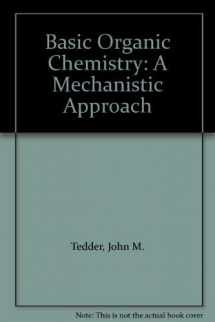
Basic Organic Chemistry: A Mechanistic Approach
ISBN-13:
9780471909774
ISBN-10:
0471909777
Edition:
Subsequent
Author:
John M. Tedder, A. Nechvatal
Publication date:
1987
Publisher:
John Wiley & Sons Inc
Format:
Paperback
316 pages
FREE US shipping
Book details
ISBN-13:
9780471909774
ISBN-10:
0471909777
Edition:
Subsequent
Author:
John M. Tedder, A. Nechvatal
Publication date:
1987
Publisher:
John Wiley & Sons Inc
Format:
Paperback
316 pages
Summary
Basic Organic Chemistry: A Mechanistic Approach (ISBN-13: 9780471909774 and ISBN-10: 0471909777), written by authors
John M. Tedder, A. Nechvatal, was published by John Wiley & Sons Inc in 1987.
With an overall rating of 4.2 stars, it's a notable title among other
Organic
(Chemistry) books. You can easily purchase or rent Basic Organic Chemistry: A Mechanistic Approach (Paperback) from BooksRun,
along with many other new and used
Organic
books
and textbooks.
And, if you're looking to sell your copy, our current buyback offer is $0.43.
Description
The changes over the last twenty years in the teaching of organic chemistry have been reflected in the new edition of this highly successful book. Each chapter now begins with a brief account of the spectroscopic characteristics of the relevant class of molecules and in this way the student is encouraged to develop his understanding of spectroscopy and chemical reactivity simultaneously. Because of the importance of spectroscopy in this field, a new chapter in this edition outlines the techniques available to the organic chemist, and gives the student an excellent introduction to the potential of NMR and infrared spectroscopy for structural determination. Another new chapter has been included which describes pictorial orbital theory. This will be especially useful to those students continuing with organic chemistry to a higher level who require an introduction to molecular orbitals. As in the first edition, the subject is developed logically from an elementary knowledge of general and inorganic chemistry, each new step being dependent of what has gone before. The authors have avoided the pitfalls usually associated with a theoretical approach by giving a few questions at the end of each chapter illustrating 'useful reactions', and by including methods of preparation after the reactions themselves have been discussed. Natural products have not been neglected, but the authors deal with these towards the end of the book when the student is in a position to appreciate the structures and reactions involved.


We would LOVE it if you could help us and other readers by reviewing the book
Book review

Congratulations! We have received your book review.
{user}
{createdAt}
by {truncated_author}


